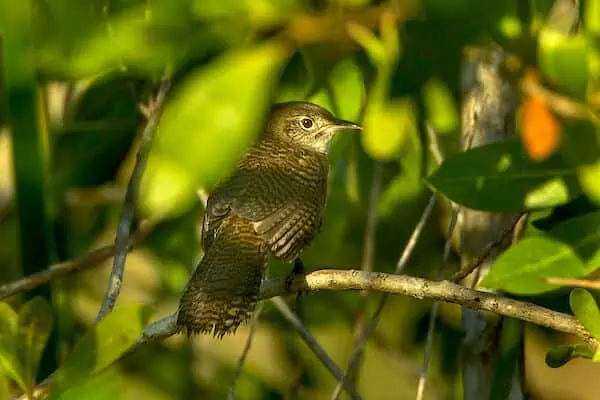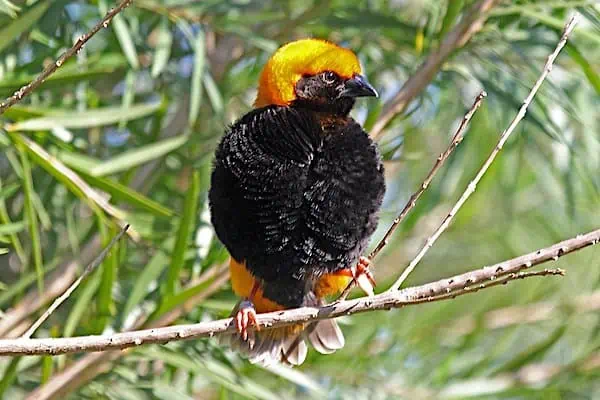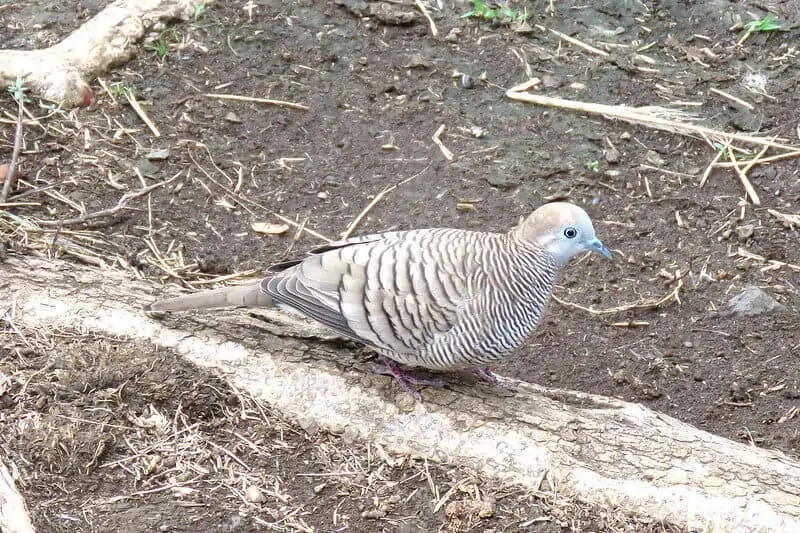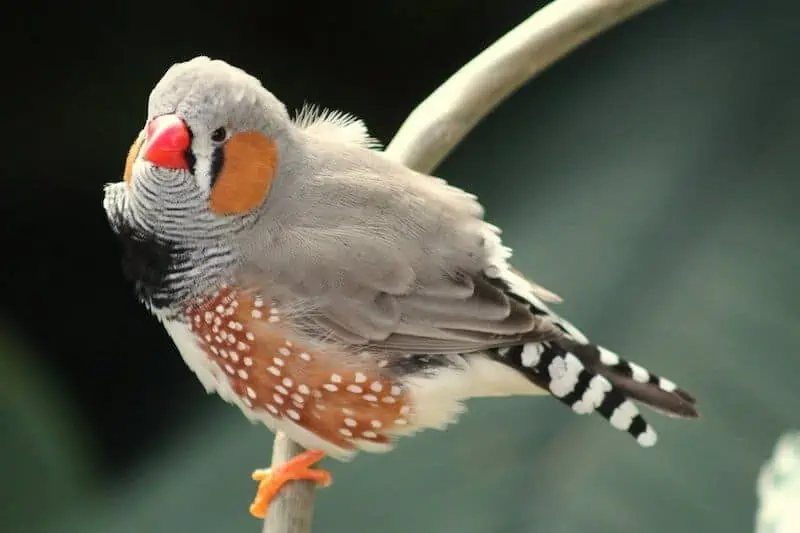Birds have names that begin with every letter of the alphabet and come in a variety of colors and sizes. When it comes to letters, coming up with more than a few words that begin with Z is practically impossible, and coming up with animals that start with Z is much more difficult. We’ve looked into images and facts about 15 birds that begin with Z all over the globe in this article.
15 BIRDS THAT START WITH THE LETTER Z
Starting with the zone-tailed hawk, here is a list of 15 distinct birds that begin with the letter Z.
1.ZONE-TAILED HAWK

Scientific name: Buteo albonotatus
Lives in: Central America, the southwest United States, and portions of central and eastern South America
The whole bodies of these medium-sized raptors are dark grayish-brown. Their outer flight feathers are striped with black tips while in flight from below. Their tails will have barring while they are still juveniles, but two white bands will appear when they are adults. In the foothills, canyons, and mesas, zone-tailed hawks prefer to hunt for tiny birds, mammals, reptiles and amphibians.
Zone-tailed hawks have a fascinating property: their coloring and flight pattern resemble that of a turkey vulture when observed from the ground. Some experts believe this is done on purpose, to trick their prey into thinking it is a harmless vulture flying above rather than a hungry hunter.
2. ZENAIDA DOVE

Scientific name: Zenaida aurita
Lives in: the Caribbean and Yucatan Peninsula
The North American mourning dove is similar to Zenaida doves in appearance, but they are darker in color. The bright white stripe on the inner portion of the wing is one of this dove’s most distinguishing features. When the dove is in flight, this is normally more obvious. Zenaida doves, much like other doves, graze on the ground and eat mostly seeds and grains. They thrive in a variety of environments, feeding near to the water.
Fun fact about Zenaida doves: Locals on the Caribbean island of Anguilla refer to them as “turtle doves,” and they are the island’s national bird.
3.ZINO’S PETREL

Scientific name: Pterodroma madeira
Lives in: Madeira
Only on the island of Madeira does the Zino’s petrel breed. Portugal’s Madeira Island is located in the Atlantic. Only well-vegetated ledges in the island’s central mountains are home to this petrel.
During the night, they are only active at breeding sites, but during the day, they cruise around the ocean. They’ll be safe from gulls that are active during the day in this manner. The birds go to the sea after the breeding season, and little is known about where they go other than that they are sometimes seen in other places around the Atlantic, such as England.
Fun fact about Zino’s Petrels: They construct their own burrows or discover old rabbit tunnels, which they use as nests. Petrels who are younger will dig shorter tunnels, while petrels who are elder will dig longer tunnels.
4. ZELEDON’S ANTBIRD

Scientific name: Hafferia zeledoni
Lives in: Costa Rica, Panama, Columbia and Ecuador
Females are brown and males are black in Zeledon’s antbirds. A blue patch around the eyes of both sexes is unfeathered. In the lower levels of the canopy, they dwell in humid woods. These ants frequently accompany swarms of ants, but it is to catch insects that the ants disturb and flush from the forest floor.
5.ZAPATA WREN

Scientific name: Ferminia cerverai
Lives in: Zapata Peninsula of Cuba
This tiny wren, which is an endangered species, can only be found on Cuba’s Zapata peninsula. Save for their plain, lighter throat and chest, Zapata wrens are a grayish-brown with fine barring all over.
They eat mostly insects, snails, spiders, tiny lizards, and berries and dwell among the dense shrubs of the Zapata Swamp. Fires, wetland drainage, habitat destruction to agriculture, and predation by cats like rats and mongoose pose the greatest dangers in this tiny environment.
Fun fact about Zapata Wrens: The loud and musical song of these little brown birds is impressive.
6.ZAPATA SPARROW

Scientific name: Torreornis inexpectata
Lives in: Cuba
These sparrows are also mostly located on Cuba’s Zapata Peninsula, as our #5 bird is the Zapata wren. They have a yellow-tinged chest, white throat, and rusted head. They are mostly grayish-brown in color. These sparrows feed on grass during the year, and their diet varies with the weather. They concentrate on seeds, insects, flowers, and snails during the dry season, but have been known to eat young lizards in the wet season. They are now classed as a “neatly endangered” species. Like the Zapata wrens, they face similar wildlife hazards while losing their habitat to tourism and agriculture.
Fun fact about Zapata Sparrows: These sparrows can now be found in other parts of Cuba, despite the fact that they were originally only seen in Zapata. Because of this, they have been dubbed the Cuban sparrow on occasion, and perhaps their name will be changed in the future.
7.ZIMMER’S TAPACULO

Scientific name: Torreornis inexpectata
Lives in: southern Bolivia and northwest Argentina
The tail and rump of these little tapaculos are brown, and the mid-body is gray. The throat is white, and the forehead is white with a stripe across it. They are a bit bolder than other tapaculos, and perching on rocks or low vegetation is more common.
Although little is known about what they eat, they prefer to feed on the ground among roots and ferns. They may be found on stony slopes and ravines, living near the slopes of the Andes Mountains.
Zimmer’s Tapaculo is a fun fact: They are not presently categorized as endangered or threatened, despite the fact that they are only found in a limited area of the globe. Because their preferred elevations of 5,600 to 10,500 feet in steep terrain are unlikely to be lost, this is primarily the case.
8.ZIMMER’S WOODCREEPER

Scientific name: Dendroplex kienerii
Lives in: Brazil, northeast Peru, and southeast Colombia form the Amazon basin.
The head and upper back of these lovely woodcreepers are striped with white. They are a rich chestnut brown color. Their bill is long and pale, almost seeming to be white. Because they cling to trees and plants with their tails pressed up against the trunk, woodcreepers have an upright posture.
Zimmer’s Woodcreeper prefers flooded woods, which is a cool fact about them. These are well-known to flood during big storms in wooded places beside rivers and freshwater lakes. Varzea refers to these rare Amazon Basin freshwater swamp/flooded forests.
9.ZIMMER’S TODY-TYRANT

Scientific name: Hemitriccus minimus
Lives in: Bolivia, Brazil, Ecuador and Peru
The tyrant flycatchers are part of the Zimmer family of birds, and their Tody-Tyrant is one of them. These birds are recognized for their ability to capture airborne insects. With olive-gray coloration and two yellow wingbars, Zimmer’s Tody-Tyrant is a little flycatcher. Low-quality soil, sandy soil, or dry shrubland are common places for them to be found in forests.
Fun fact about Zimmer’s Tody-Tyrant: On this list, you may have noticed a few additional species with the letters ZIMMER. This is dedicated to John Todd Zimmer, an American ornithologist who went on birding trips to Africa and Peru in the early and mid-1900s.
10.ZITTING CISTICOLA

Scientific name: Cisticola juncidis
Lives in: southern Europe, Africa, southern Asia, northern Australia
The tail of these little birds is short and rounded at the end, with a white tip. The throat and chest are white, the sides are slightly buffy, and the back is brown mottled. Grassland birds that live near water, zitting cisticola’s, are insect eating birds.
Males start constructing the cup-shaped nest in deep grass, then invite females to inspect it. The female will complete the construction of her nest when she chooses one. Males will fly in a zigzag pattern and produce frequent “zitting” calls throughout the breeding season. Sounds like someone repeatedly opening and closing scissors, according to the zitting calls.
Fun fact about the Zitting Cisticola: To avoid confusion with a completely separate species of bird found in America also named fan-tailed warbler, they were originally known as the fan-tailed warbler.
11.ZANZIBAR RED BISHOP

Scientific name: Euplectes nigroventris
Lives in: Kenya, Mozambique, and Tanzania are the countries that make up Africa.
While females are a drab brown-streaked bird, males have vibrant plumage that is more contrasting. The top of their head and most of their upperparts are reddish-orange, while adult breeding males have a black face and underparts. Bishops like to dwell in flooded grassland and marshes, for example.
Fun fact about the Zanzibar Red Bishop: Weaverbirds, like bishops, are from the same family. These bishops will weave complex nests using lengthy strands of vegetation, much like weavers do. Little baskets suspend from firm grasses, Zanzibar Red Bishop nests do.
12.ZEBRA DOVE

Scientific name: Geopelia striata
Lives in: Thailand, Malaysia, Singapore, Sumatra and Java
Zebra doves get their name from the black stripes on their bodies. With heaving striping all over, their bodies are various shades of pale brown and gray. The barred ground dove or barred dove is another name for them.
They have been brought and subsequently colonized other areas of the globe, such as Hawaii, Tahiti, and the Seychelles, despite their original home being southeast Asia. Scrubland and open land, such as farms, parks, and gardens, are two of their favorite things. Grass and weed seeds are their primary food, which they gather while scurrying across the ground.
Fun fact about Zebra doves: The exposed light blue skin surrounding their eyes and beaks is the sole colorful feature of their body.
13.ZEBRA WAXBILL

Scientific name: Amandava subflava
Lives in: Africa, south of the Sahara
Orange-breasted waxbill is another name for zebra waxbills. They have a red beak, a gray back, and a red rump. They are little birds. A reddish eyebrow can also be seen on males. Depending on their location, their underparts might be yellow, orange, red, or a mix of those colors.
They may be found in the southern reaches of the Sahara Desert, in savannahs and grasslands. They eat seeds, plant shoots, and insects in large flocks, and they spend most of their time hanging out.
14.ZAPPEY’S FLYCATCHER

Scientific name: Cyanoptila cumatilis
Lives in: central China, Malay Peninsula, Java and Sumatra
The blue-and-white flycatcher, which is very similar to these lovely birds, is frequently confused with them. Males have a white belly and are a stunning deep blue color. Some blue coloring, but all gray heads, can be seen on females and immature males.
These birds may be found in forests, parks, and most wooded locations where they like to forage in the canopy for insects. Their population status is presently judged to be “near threatened,” although little data about it is available.
15.ZEBRA FINCH

Scientific name: Sunda Zebra Finch and Australia Zebra Finch are two species of Taeniopygia.
Lives in: Australia and Sunda Islands of Indonesia
The zebra finch has recently been divided into two subspecies: one that lives in Australia and another that lives on the Sunda Islands of Indonesia. The top parts of both finches are gray, and the beak, light belly, buffy brown sides with white markings, and black and white on the tail make them look similar.
Males finches sing a variety of loud, intricate tunes, and each guy sings differently from the other. They breed in groups and may even nest near each other. One is constructed for egg production, while the other is a dome-shaped construction solely used for roosting and huddling.
Fun fact about Zebra Finch: The white and black stripes on the Australian species’ neck are referred to as zebra finches. The popular pet status of this species has long been known.
